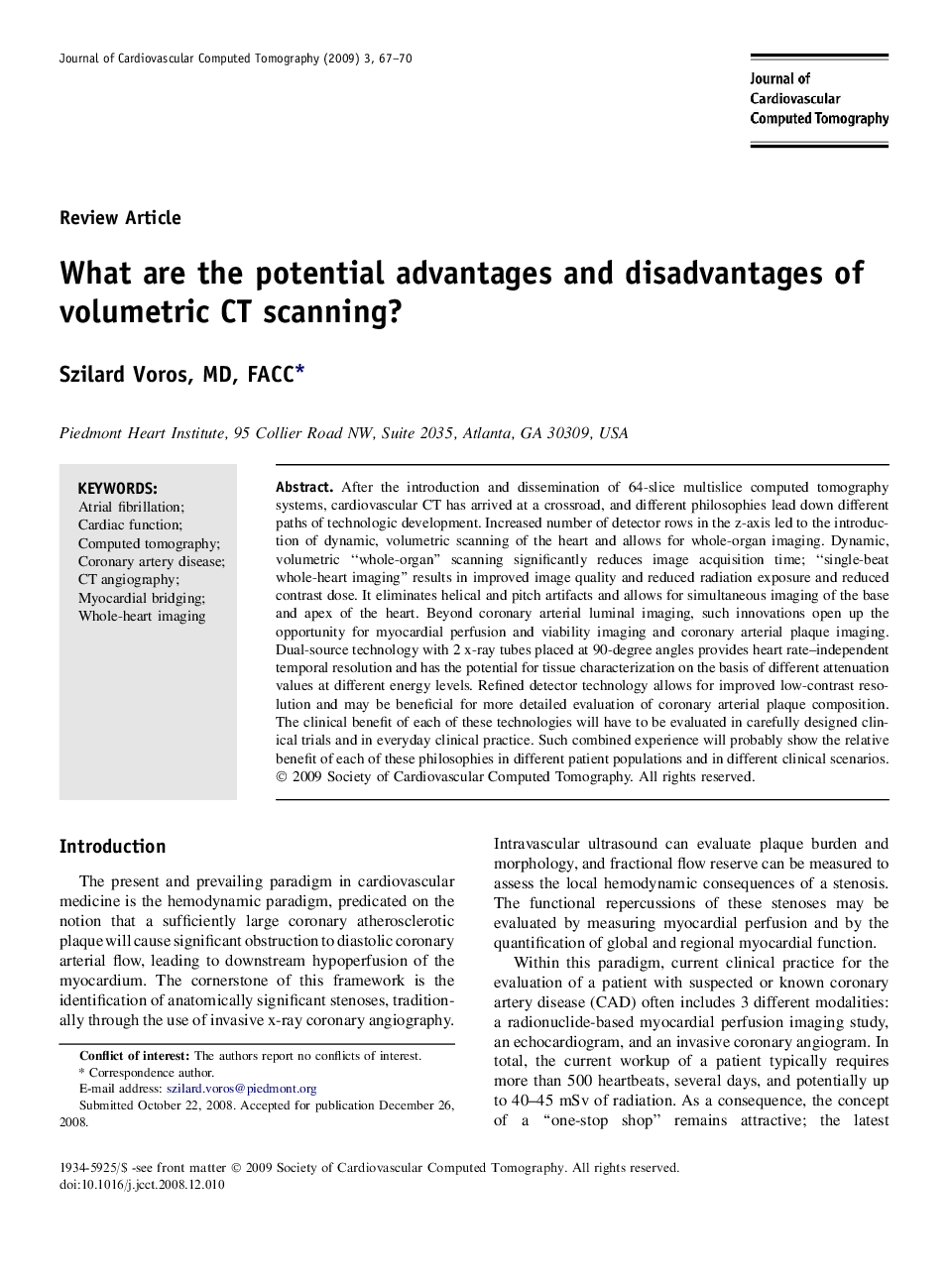| Article ID | Journal | Published Year | Pages | File Type |
|---|---|---|---|---|
| 2965071 | Journal of Cardiovascular Computed Tomography | 2009 | 4 Pages |
After the introduction and dissemination of 64-slice multislice computed tomography systems, cardiovascular CT has arrived at a crossroad, and different philosophies lead down different paths of technologic development. Increased number of detector rows in the z-axis led to the introduction of dynamic, volumetric scanning of the heart and allows for whole-organ imaging. Dynamic, volumetric “whole-organ” scanning significantly reduces image acquisition time; “single-beat whole-heart imaging” results in improved image quality and reduced radiation exposure and reduced contrast dose. It eliminates helical and pitch artifacts and allows for simultaneous imaging of the base and apex of the heart. Beyond coronary arterial luminal imaging, such innovations open up the opportunity for myocardial perfusion and viability imaging and coronary arterial plaque imaging. Dual-source technology with 2 x-ray tubes placed at 90-degree angles provides heart rate–independent temporal resolution and has the potential for tissue characterization on the basis of different attenuation values at different energy levels. Refined detector technology allows for improved low-contrast resolution and may be beneficial for more detailed evaluation of coronary arterial plaque composition. The clinical benefit of each of these technologies will have to be evaluated in carefully designed clinical trials and in everyday clinical practice. Such combined experience will probably show the relative benefit of each of these philosophies in different patient populations and in different clinical scenarios.
